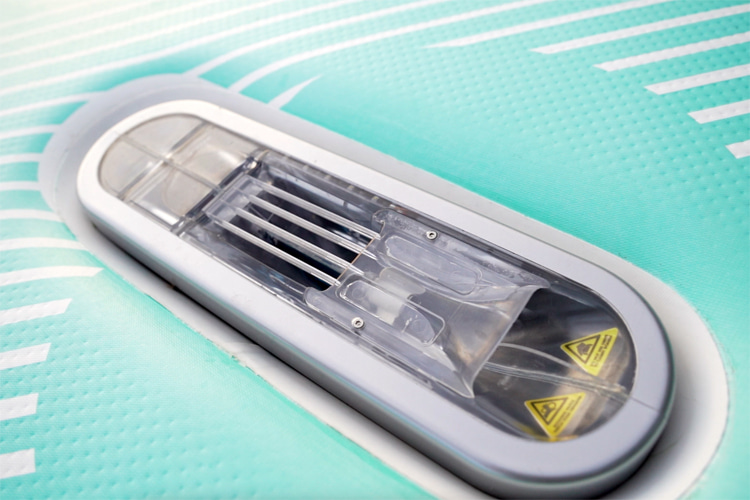Electric SUP: why you should get a motorized paddleboard
Mục Lục
The watersports industry is giving birth to all sorts of toys and gadgets, and the electric mobility revolution provided everything from personal submarines to underwater jetpacks.
But one invention caught our eye and made us wonder – is this a joke or a stroke of genius?
Lo and behold: the stand-up paddleboarding (SUP) segment is being popularized with the electric stand-up paddleboard or e-SUP.
And to be sure, this is a serious piece of SUP gear.
First, here’s a bit of context.
The electric stand-up paddleboard isn’t a substitute for the manually propelled classic SUP but an upgrade much like an e-bike is to the original bicycle.
This is how the EU-based manufacturer SipaBoards describes the invention.
Die-hard paddlers might scoff, but there actually are several points where the board proves its worth.

Common Hazards
Here’s a common situation any paddler who has been out there will understand.
You’re going out on a morning paddle, pushing it over the bay and around the cove. It’s close to a perfect day, and you’re confidently paddling on.
You feel the shins burning a bit, your core is crunching it, and you’re powering on.
After an hour and a few miles, the sun is higher, and you’re on your turn, ready to cruise back.
Waves start curling over the bay, and the salty sweat proves that you’re doing the work. The wind is picking up, and the tide is rolling out.
Your point of return starts to shift and evade you, and your legs are feeling the strain.
Next thing you know, the current is pulling you out, the waves are knee-high, and you’re battling an offshore wind that has turned.
What can follow is either an exhausted finish or a rescue mission.
And as stand-up paddling is quickly becoming one of the most popular sports, it’s also causing a growing number of rescues.
About 90 percent are due to changing conditions and lack of route planning.
Tragically, even a sport as chill as paddleboarding often ends up in the worst scenarios.
What SipaBoards are betting on is a little electric motor integrated into the board that can be used as a paddle assist once the weather sours.

Safer, Useful, and Not Cheap
With an integrated motor, the ride on these boards is not obstructed in any way.
There’s a hole in the center of the board holding the battery-powered jet motor, which creates zero drag when the engine is off.
But with a flick of a switch – or better said, a push of a button on your oar – the drive transforms the ride and propels the board to up to seven kilometers per hour.
It’s not much but, if you’re eager to go for speed, you will easily double that and cruise faster than on any other inflatable SUP.
The range of these boards differs from the motor’s output, and you’ll be able to use the engine from one to three hours of operation on three different speed settings.
The central position holds the course and avoids any zig-zagging, which was a common pain to the fin-mounted motor alternative.
In addition to safety, it helps newbies pick up SUPing at an accelerated pace. So there’s more speed, longer range, a safer experience, and a shorter learning curve.
But utility-wise, there’s more.
The motor operates as a compressor that will inflate the board in minutes, and it has an integrated LED lights system that illuminates the sea floor and offers the possibility of a night ride.
The boards are remote-controlled via Bluetooth and come with a free iOS app that helps with settings, operations, and ride tracking.
The motor is powered with a 144Wh battery, built into a watertight heavy-duty polycarbonate case with a high-efficiency jet-shaft drive.
The boards, coming in several models, will hold their own against any premium brand out there and are now, in their mature generations, around 40 percent lighter than the original model.
The brand has cleverly steered off the double chamber technology and opted for MSL heat bonded cores, making the boards stiff and light.
All the benefits are, however, packed into a high-ticket price, starting at $1.990.
SipaBoards owner and founder Sebastjan Sitar reasons that while the price is high compared to entry model classic SUPs, they’ve received nothing but praise from their buyers so far.
The e-Bike of Watersports
The industry is picking up e-SUPs just as it started with eBikes years ago, and this just might be the next best thing in stand-up paddleboarding.
However, it’s not for everyone.
While the price point will be the first point of reflection (and deflection for many), those opting for an upgrade will need to consider more angles when opting for these.
As we’ve seen the industry exploding over the last years and more and more people flocking to stand-up paddling, electric boards are only one of the novelties on the market, with foil boards and hybrids taking a quicker growing pace within niche segments.
So what’s the verdict? Is there a need for an electric motorized SUP in the stand-up paddling world?
Probably there is. The market is still growing fast and will need to differentiate once it hits maturity.
Will the die-hard purist paddlers love it? Probably not. But families, newbies, the elderly, and other enthusiasts will.
If you consider a board developed to keep you safe, help you learn, and offer an experience a classic board falls short of, there’s a growing amount of pros against some apparent cons.
Words by Miha Rausl | Manager at SipaBoards.com















![Toni Kroos là ai? [ sự thật về tiểu sử đầy đủ Toni Kroos ]](https://evbn.org/wp-content/uploads/New-Project-6635-1671934592.jpg)


